Was the body of Christ laid to rest in Southern France?

Image on a Reliquary kept in la Sainte-Baume (South of France). The boat carrying Mary Magdelene into Southern France is also carrying a mummified body facing Mary mother of Jesus
What happened to the body of Jesus after his burial?
It is the the central question of the recent book La Tombe Perdue (The Lost Tomb) by French author and researcher Christian Doumergue.
Three days after its interment, the body of Jesus disappeared from the Tomb in which it had been laid to rest. While the church claims Jesus was raised from the dead, already during the first centuries, this was subject to heavy debate amongst many Christians and Gnostics who disputed the idea. Serious historians could never reconcile with the idea in the first place.
So what really happened then?
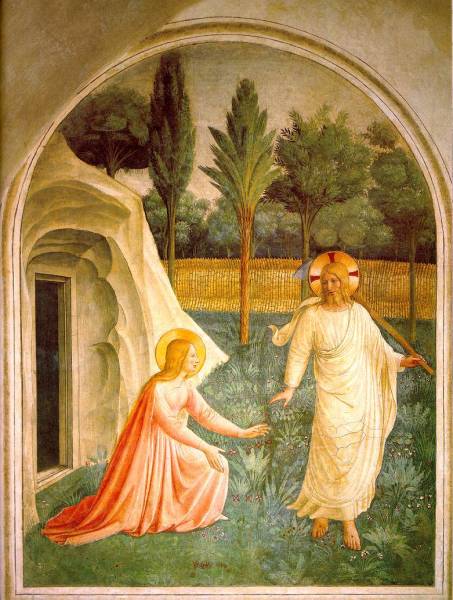 In the Gospel of John, Mary Magdalene suggests that the body of Jesus is moved. She talks to man, she believes to be a gardener and asks him where he moved the body. Later in the Gospel, John tells us that this gardener is none other than Jesus himself. Today it is known for fact that sections of the Gospels were ‘tuned’ to be in line with the dogma of the physical resurrection. There are several indications that he passage about the gardener is one of those.
In the Gospel of John, Mary Magdalene suggests that the body of Jesus is moved. She talks to man, she believes to be a gardener and asks him where he moved the body. Later in the Gospel, John tells us that this gardener is none other than Jesus himself. Today it is known for fact that sections of the Gospels were ‘tuned’ to be in line with the dogma of the physical resurrection. There are several indications that he passage about the gardener is one of those.
Now who was this gardener and why would Mary Magdalene ask him where he moved the body of Jesus? Perhaps coincidentally, some Jewish traditions do speak of a gardener 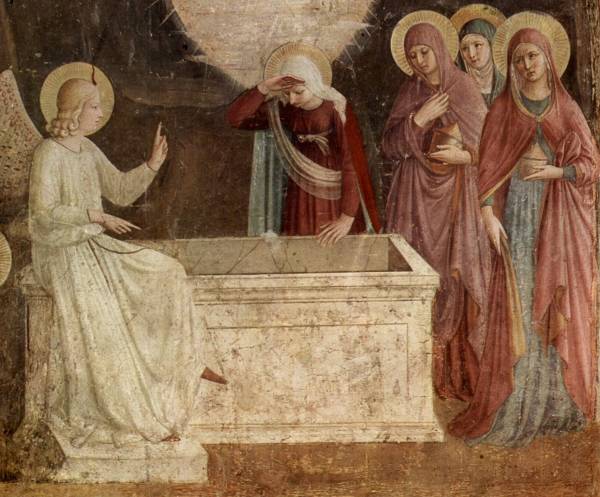 who would have stolen the body of the Christ. They have in fact been in existence since the first centuries of Christianity. Reconciling these traditions with the original Gospel of John, all of a sudden it appears to become an actual possibility that Mary Magdalene spoke to the man who took the actual body of the actual Christ out of its tomb. She even appears to have found it back.
who would have stolen the body of the Christ. They have in fact been in existence since the first centuries of Christianity. Reconciling these traditions with the original Gospel of John, all of a sudden it appears to become an actual possibility that Mary Magdalene spoke to the man who took the actual body of the actual Christ out of its tomb. She even appears to have found it back.
So what became of the body of Jesus then? Several traditions claim Mary Magdalene left Jerusalem. Many of them tell us she travelled to the South of France. Some lesser known ones claim that she went to Rome first to ask the Emperor Tiberius to make amends for the death of Jesus. This suggestion is less outrageous than it might seem. Mary Magdalene would have had access to the Emperor through Claudia Procula, Pontius Pilate’s wife whom she knew and who was a relative of Tiberius. The name Claudia indicates membership of the important Claudii family, the family of the Emperor himself.
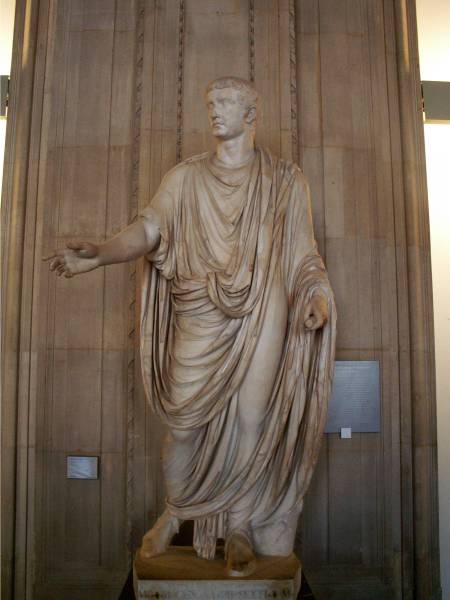 According to a IVth century apocryphical text, Mary Magdalene told Tibere she wanted to speak to him about the inequitable death of Jesus. The response of the Emperor maybe in an ancient manuscript, kept in the French National Library in Paris. The text is called ‘The Avenging of the Saviour’ and has been dated back to the Carolingian period, some time between 700 and 720 AD.
According to a IVth century apocryphical text, Mary Magdalene told Tibere she wanted to speak to him about the inequitable death of Jesus. The response of the Emperor maybe in an ancient manuscript, kept in the French National Library in Paris. The text is called ‘The Avenging of the Saviour’ and has been dated back to the Carolingian period, some time between 700 and 720 AD.
In the manuscript, a woman by name of Veronica shows up to meet the Emperor Tiberius. A further study of the text uncovers that Veronica is another name for Mary Magdalene. In ‘The Avenging of the Saviour’, Veronica / Mary Magdalene converts the Emperor Tiberius to become a Christian. The text continues to claim that, after his meeting with the Magdalene, he has an underground sanctuary constructed in the South of France ‘on behalf of’ Christ.
Was this underground sanctuary intended to become Jesus’ grave as an atonement for his death as Mary Magdalene requested? You would get the impression from how it is described in the manuscript. Moreover, some of the traditions about Mary Magdalene coming to France have her travelling in the company of mummified body
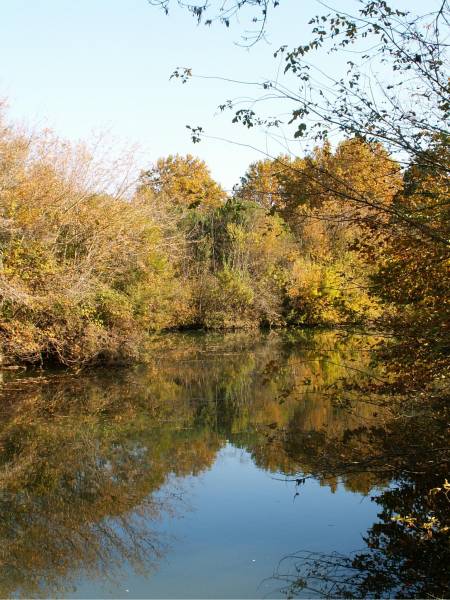 What is most extraordinary about ‘The Avenging of the Saviour’ is the precision by which it gives the location of the underground chamber. It tells us Tiberius’ construction was built beneath the crossing of two streams: the Hérault and the Tincta (today the Thongue). The streams cross close to the village of St. Thibery, an obvious reminder to the Emperor’s name Tiberius (Tibere in French). No doubt the village was named after the relics of a certain St. Tibere. The locals will tell you St. Tiber was a Roman saint. As happens often, perhaps this figure served as the memory placeholder for an event in which the Roman Emperor bestowed a great favour on the Christians in this area.
What is most extraordinary about ‘The Avenging of the Saviour’ is the precision by which it gives the location of the underground chamber. It tells us Tiberius’ construction was built beneath the crossing of two streams: the Hérault and the Tincta (today the Thongue). The streams cross close to the village of St. Thibery, an obvious reminder to the Emperor’s name Tiberius (Tibere in French). No doubt the village was named after the relics of a certain St. Tibere. The locals will tell you St. Tiber was a Roman saint. As happens often, perhaps this figure served as the memory placeholder for an event in which the Roman Emperor bestowed a great favour on the Christians in this area.
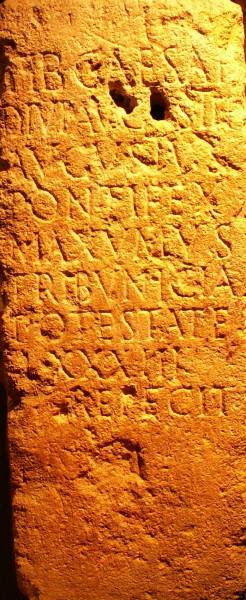 In Roman times, the village of St. Thibery was called Cessero. A Roman inscription found near the village commemorates works by Tiberius.
In Roman times, the village of St. Thibery was called Cessero. A Roman inscription found near the village commemorates works by Tiberius.
Another ancient document kept in the French National Library states that a there was an underground chamber in St. Thibery which is blocked today. Documents in the Departmental Archive of the Hérault region tell us when it was blocked and how.
Today, the entrance lies beneath several metres of rubble. Further investigations will no doubt shed light on what really took place in St. Thibery almost 2.000 years ago. There seems a distinct possibility it once hosted the first Tomb of Jesus in the South of France. The first indeed, as an apocryphical text by Claudia Procula suggest that the body was again moved.
 Christian Doumergue was born in 1976. He has a Masters degree in Archeology and a post-graduate diploma in Comparative Literature. He is the author of several books on Rennes-le-Château, Mary Magdelene and Gnosticism.
Christian Doumergue was born in 1976. He has a Masters degree in Archeology and a post-graduate diploma in Comparative Literature. He is the author of several books on Rennes-le-Château, Mary Magdelene and Gnosticism.
This is a summary of the first part of Christian Doumergue’s book La Tombe Perdue published by Pardes in 2008. There is no English translation available at this the moment. ISBN 978-286714-414-1
©2007-2012 renneslechateau.nl, all rights reserved. The excerpt is displayed here with kind authorization of the author

Perhaps the anagram of the headstone of Marie de Negre can cast some extra light?
HELENE ADIABENE CAME FROM SION IN (the year) 31 TO BURY IN ATAX (old name for the Aude region) THE BODY OF J(esus) C(hrist) ONE HUNDRED STEPS OF THE PLACE IT GUARDS THE GRAVE THAT GUILHEM (de Gellone) MADE FOR MARY THE MAGDALENE IN 805
https://www.renneslechateau.nl/2007/11/11/de-ngre-head-stone/
Christian is a cheeky monkey. He knows better, because he’s actually trained in archival research. One cannot establish a theory on the basis of legends dating from many centuries after the fact. And as far as the document he furnishes as “proof”, it’s also many centuries after the fact, and makes impossible assertions on a meeting between Tiberius and MM in Rome, as well as subsequent travels by Tiberius to the Razes. We all know it’s impossible as he was under heavy guard on his lovely little island retreat, and never left. The reported goings-on on the island also were not indicative of any conversion of the Emperor by MM!
The stone engraving showing works by Tiberius in the area, do not signify that Tiberius presided over these works (or perhaps even knew about them), merely that his administration approved and funded them.
(Hi Corjan, just dropping by to see what’s going on)
Ms. Leni O’Hara,
Problem: Helena of Adiabene (which was in ancient Mesopotamia) was a Hellenistic Jewish convert, not a Christian. What’s more, there’s absolutely no evidence she ever went to France. Where the ‘decoders’ got that name from I have absolutely no idea.
Teabing,
Thank you for your comment. You might perhaps care to peruse the following links which explore the possible identity of Helena of Adiabene:
Hélène d’Adiabene = Marie de Magdala ?
http://www.domainofman.com/forum/index.cgi?noframes;read=5625
http://rennes-le-chateau-la-revelation.com/forums/viewtopic.php?t=7927&start=0
Queen Helena of Adiabene was not a Christian. Further, she lived at the wrong time to be MM.
I’ve seen much erudite theorizing about this on a French website, and the bottom line is that it’s not possible.
It’s also not very credible the Guilhem de Gellone arranged a tomb for MM – in complete secrecy – in 850. In those days, it would have been a major income producing pilgrimage enterprise. If he’d somehow found her body, why would he keep it a deep and dark secret? It makes absolutely no sense, in the context of the time. (Particularly when we know how Guilhem campaigned to obtain relics for his Abbey)
Roger,
I’d like to respond first of all to the second paragraph of your comment.
I must respectfully disagree that Guilhem de Gellone would not have gone through the trouble of arranging a tomb for Mary Magdalene, as he appears to have held her in veneration. Moreover, the date of the creation of the alleged tomb (in 805 AD) falls within his lifetime, as he is recorded as having died in 812 AD.
The extract below, while admittedly not from a primary source, does furthermore seem to describe a situation in which it is not beyond the realm of possibility that a tomb of some sort existed, around which the flourishing (and no doubt profitable) cult of the Magdalene in Gellone might have arisen, given that cults tend to thrive in the presence of holy relics or tombs of saints.
“Guillem also established an academy at Gellone, importing scholars and creating a renowned library, such that Gellone soon became an esteemed center of Judaic studies. Before Guillem’s death, moreover, Gellone had become one of the first known seats in Europe for the cult of the Magdalen — which, significantly enough, flourished there concurrently with the Judaic academy.”
http://www.halexandria.org/dward217.htm
Ms. O’Hara, you misunderstood my comment. I was stating that Guilhem would have indeed enthusiastically built a tomb for MM, but hardly in secrecy, as it would’ve been like manna from heaven, in that period it would have made him a fortune from the pilgrimage tourism crowd.
Roger, Thanks for the clarification. Actually the more I read about Guilhem de Gellone, in particular the work of researcher David Hughes, the more wary I become of attempts to use MM to promote the belief that the noble families of Europe descend from Christ himself. The Adiabene anagram which links Gellone to MM would seem to fall within this paradigm, which portrays MM as his ancestress who came to what is now France from the Holy Land.
The Cypriot tradition which claims she and Lazarus came to Cyprus seems somewhat more believable, the island being close by and allegedly the first country to be converted to Christianity. While according to this scenario, Lazarus apparently remained in Cyprus (he is patron saint of Larnaca), MM appears to have travelled on to Ephesus from where her remains were later taken to Constantinople by Byzantine Emperor Leo the Wise (VI). An article on the Church of St. Lazarus website entitled The Worship of St. Lazarus in the West and Related Traditions in my view elegantly demolishes the French connexion:
http://www.ayioslazaros.org/istoria1_eng.htm
So perhaps Monsieur Doumerge should be looking for the tomb of Christ in Cyprus, or even Ephesus!
Leni,
Thanks for the source on the Church of Saint Lazarus. I agree that it makes the ‘French Connection’ theory of the fate of MM rather unlikely! I would caution, however, that this account is also biased in its attempt to legitimize that particular church as the final resting place of St. Lazarus. In my opinion, none of the medieval legends concerning the apostles’ travels to Europe and the Orient can really be trusted, because most of them seem obviously contrived to legitimize certain sites as reliquaries. That said, I would agree that the Cyprus-Ephesus account sounds more likely.
Hi Teabing, You probably already know that Cyprus has a long tradition of worshipping a goddess (mainly Aphrodite, in the western part, but also Astarte in the east) along with their dying and resurrecting consorts (Adonis and Baal respectively), therefore it’s not surprising that the legend of Magdalene’s and Lazarus’ presence on the island arose. Incidentally Cyprus has been gripped lately by the saga of the discovery of the allegedly ‘oldest bible ever found’- which, if genuine, and less edited than other versions, might eventually cast further light on the events following the Crucifixion…
For addition to my comment just submitted, please.
Cypriot Bible Could Be From Jesus’ Time
http://news.aol.com/article/cypriot-bible-could-be-from-jesus-time/332408
Perhaps there are other considerations that indicate Jesus never died on the cross and never had a tomb in France. Consider that there are 12 reports in the NT of seeing Jesus alive and in the flesh long after the crucifixion. This suggests the cruicifxion may have been a near-death experience (in modern terms) but that Jesus in actual fact survived. Hence his resurrection was in the flesh. To support this view, one need only look outside the Bible to other historical accounts of witnesses who saw Jesus. Eusebius of Caesarea wrote in ‘Ecclesiastical History’that Jesus survived and that Pilate and Tiberius were unanymous in their hatred for the Jewish priests, and proposed that Jesus be made a god in honor of his ordeal and survival.Although not added to the Roman pantheon of gods, it was determined that no hostile measures would be taken against Jesus. He was a free man who could live as he chose. For the next eleven years he still had a known presence in the region, and resided at Pella (Askew Codex)with many of the disciples and his mother. You have far more historical substantiation for these events than for most others presented here. In the name of fair and balanced research, you need to examine this alternate view and come to terms with explaining its implications.If true, then all successive theories and conjectures must be altered accordingly.
All the best,
Shasta
Thank you for posting so much interesting information, Shasta! Regarding the possibility of Jesus not having died on the cross, the ‘Cypriot bible’ I mentioned in my last post, apparently the gospel of St. Barnabas, appears to contain the assertion that it was Judas who was crucified and died on the cross, not Jesus. As the English-language Turkish Cypriot newspaper which just this week published the latest update on the discovery is not yet online, I can’t post an url for it just now. I’ve sent a scanned copy of the article to another webmaster, however, who is hopefully going to post it on his site, at which time I can provide the link. In the meantime however, you may refer to a Wikipedia article on St. Barnabas which mentions this gospel and some of its more controversial contents. Here is an excerpt:
“Another book using that same title, the “Gospel of Barnabas,” survives in two post-medieval manuscripts in Italian and Spanish[16]. Contrary to the canonical Christian Gospels, and in accordance with the Islamic view of Jesus, this later “Gospel of Barnabas” states that Jesus was not the son of God, but a prophet, and calls Paul “the deceived.” The book also says Jesus rose alive into Heaven without having been crucified, and that Judas Iscariot was crucified in his place. Allegedly also it mentions by name the Comforter, as Mohammad.[17]”
http://en.wikipedia.org/wiki/Barnabas
Lenni I am familliar with the St. Barnabas Gospels…made much of by Ahmaddi Muslims..
the only original edition appeared in the 16th century…it even includes some familiarity with Dante. Therefor it has been discounted as not of orignal 1st, 2nd, or even 3rd century writings that would have originated from Barnabas the Apostle.
In addition,(according to Wikipedia) it is clearly written by a Muslim and shows influences from the Quran..This work bears strong parallels with the Islamic faith, not only mentioning Muhammad by name, but including the shahadah (chapter 39). It is strongly anti-Pauline and anti-Trinitarian in tone. In this work, Jesus is described as a prophet and not the son of God[35] , while Paul is called “the deceived”. Furthermore, the Gospel of Barnabas states that Jesus escaped crucifixion by being raised alive to heaven; while Judas Iscariot the traitor was crucified in his place. These beliefs; in particular that Jesus is a prophet of God and raised alive without being crucified; conform with Islamic beliefs.
Hence most Muslims will refer to this Gospel in support of their views. However, it is not a reliable source for any 1st century information, especially regarding Jesus.
All the best,
Shasta
Thanks, Shasta, for that overview of the gospels of St. Barnabas. I went back and reread the first article by two Reuters writers (at the url I’d posted earlier) and compared it with the article that appeared in a Turkish Cypriot paper recently (that I’m unable to post as the paper is not yet online). The Reuters article doesn’t mention Judas or Mohammed and states that the newly-found document is written in Syriac, a dialect of Aramaic.
I’m wondering now if the author of the most recent article perhaps googled Barnabas and, coming upon the information about Judas, added that to his article, perhaps assuming that the ‘lost gospel’ found in the north of Cyprus, must be the same as the already discovered Gospels of Barnabas. It seems we’ll have to wait until more precise information emerges about this latest find before we can draw any firm conclusions either way.
Best regards,
Leni
Have none of you people heard of the tomb of Christ in Kashmir. There is much documentation of his preaaching in India and an actual tomb exists; there cared for by Musilims!
Thanks Howia, yes, I have heard of that legend. ‘Jesus’ certainly seems to have gotten around – as he is also alleged to have been laid to rest in Japan:
http://www.rense.com/general60/jesusjapan.htm
Yes, there are graves for Jesus in Jerusalem, France, Kashmir (India) and Japan.
My research has foused exclusively on the probable survival of jesus from crucifixion, and his ultimate trvaels and death in kashmir. These views have been reinforced first with the 12 appearances of jesus after crucifixion within the NT….plus examining evidence about crcuifixion and the plots afoot to save Jesus…then examining the overwhelming evidence in Kashmir. Yes, Muslims rule the tomb. All who were Christians, Jews, and Hindu, Sikh, and Buddhist have either fled Kashmir or converted…leaving only Muslim caretakers. This has been a problem for those claiming the tomb is a Christian site.
I am returning to the region in September to resume the DNA project. The artifacts will be scientifically validated and documented at that time. Till then, please keep an open mind.
Or better yet, do some more reading and research on your own. If the theory proves correct, and Jesus is discovered there, this certainly will alter all historical views and interpretations.
All the best,
Shasta
Hi Shasta,
Your research sounds very interesting. Have you posted or published any of it online yet? I am also involved in DNA work. I look forward to hearing the results from your trip to Kashmir in September.
Regards,
Leni
Hello!
Sorry, I’m not here to add anything to this (very interesting) debate.
However, I am a 17 year old History student and am finding this all extremely intriguing. Would anyone be kind enough to give me any good points of reference (i.e. books, journals, articles etc…)on this?
Thanks.
Victoria
Hi Victoria,
Thank you for your nice comment! I would suggest starting with Holy Blood, Holy Grail by the authors Lincoln, Baigent and Leigh, as a good introduction, then branch out from there.
Interesting article.
St Thibery is a unique place steeped in history and legend. In the past it was frequented by pilgrims who believed relics there had special healing powers.
La Tombe Perdue (The Lost Tomb) book…true or not?…Who knows…but it’s certainly a distinct possibility!
This page is great. I look at the entire RLC phenomena like a single root that spawned 1,000 trees. There are so many peices to the puzzle, I believe that someone knows the location of the body of Jesus, I wish it was me..